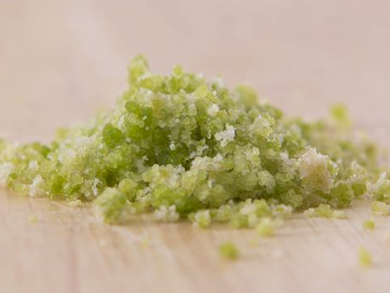Heiko Rischer and colleagues, VTT Technical Research Centre of Finland Ltd., Espoo, have developed plant cell culture (PCC) technologies to produce vegetable foodstuffs and ingredients. The team has examined the nutritional and sensory properties of dried and fresh cells grown from cloudberry, lingonberry, and stoneberry by using PCC technology. For this, suspension cultures of the plant cell lines were initiated from soft callus and cultivated in the optimal medium for each cell line.
The researchers found that the PCC samples had a pleasant, fresh, and mild flavor. It resembled that of corresponding fresh fruits. The berry-like flavor was more intense in the dried samples and they were also melting appealingly in the mouth. Their visual appearance also resembled that of the corresponding fresh fruits.
Moreover, the plant cells were in many respects more nutritionally valuable than the fruits: They had a high protein content of 14–19 %, and in vitro analysis showed good protein digestibility. The contents of essential amino acids important to muscle, bone, and tissue health were higher than those reported for soy, which is considered an excellent source of amino acids. The dietary fiber of the samples varied between 21 and 37 %. This is higher than in breakfast cereals, for example. The energy content was higher than the team has anticipated and the PCC samples were also found to be rich sources of unsaturated fatty acids. A previous study has shown that cell cultures have high contents of polyphenols that are known for their health-promoting effects [1].
According to the researchers, cell cultures have a serious potential to solve the problem that there is not enough arable land to meet the growing global population’s food demands. They say that in the future PCCs can be used to produce food that has a higher nutritional value in a considerably faster and easier way and at lower costs than growing plants.
- Plant cells as food – A concept taking shape,
Emilia Nordlund, Martina Lille, Pia Silventoinen, Heli Nygren, Tuulikki Seppänen-Laakso, Atte Mikkelson, Anna-Marja Aura, Raija-Liisa Heiniö, Liisa Nohynek, Riitta Puupponen-Pimiä, Heiko Rischer,
Food Res. Int. 2018, 107, 297–305.
https://doi.org/10.1016/j.foodres.2018.02.045
Reference
- [1] Variability in the production of tannins and other polyphenols in cell cultures of 12 Nordic plant species,
Jussi Suvanto, Liisa Nohynek, Tuulikki Seppänen-Laakso, Heiko Rischer, Juha-Pekka Salminen, Riitta Puupponen-Pimiä,
Planta 2017, 246, 227–241.
https://doi.org/10.1007/s00425-017-2686-8




